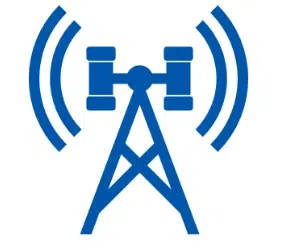The Internet of Things (IoT) is having a significant impact on cell tower usage by increasing the demand for wireless connectivity and data transmission. IoT devices are a rapidly growing category of connected devices that includes sensors, meters, appliances, vehicles, and other objects capable of collecting and exchanging data over the internet. Here’s how IoT is impacting cell tower usage:
- Increased Device Density: IoT devices are often deployed in large numbers, creating a higher device density in urban and industrial areas. This increased density places additional demands on cell towers to handle the communication needs of these devices.
- Low-Power Connectivity: Many IoT devices are designed to operate on low-power, wide-area networks (LPWANs) such as Narrowband IoT (NB-IoT) and LTE-M. These networks utilize existing cell tower infrastructure to provide cost-effective, long-range connectivity for IoT devices.
- Data Traffic Growth: IoT devices generate a wide range of data types, including sensor data, telemetry, and control commands. This data needs to be transmitted to cloud-based platforms and applications for analysis and decision-making, contributing to the growth of data traffic on cell networks.
- Smart Cities: Smart city initiatives leverage IoT to improve urban services and infrastructure. This includes deploying IoT sensors for traffic management, waste management, environmental monitoring, and public safety. Cell towers play a critical role in connecting these devices and relaying data to citywide control centers.
- Agriculture and Industry: IoT is transforming agriculture and industrial operations through the use of connected sensors and equipment. In agriculture, IoT sensors monitor soil conditions, crop health, and irrigation systems, while in industry, IoT devices enable predictive maintenance and real-time monitoring of machinery and assets.
- Fleet Management: IoT-enabled fleet management solutions utilize GPS and telematics to track vehicles, optimize routes, and monitor driver behavior. These systems rely on cellular connectivity, increasing the demand for reliable cell tower coverage.
- Healthcare and Wearables: The healthcare sector is adopting IoT for remote patient monitoring, wearable devices, and asset tracking within medical facilities. These applications require cellular connectivity to transmit health data and information.
- Security and Surveillance: IoT-enabled security cameras, access control systems, and surveillance devices rely on cellular networks to transmit video feeds and alerts to monitoring centers.
- Retail and Inventory Management: Retailers are using IoT for inventory tracking and supply chain management. Cellular connectivity ensures real-time visibility into stock levels and inventory movements.
- Environmental Monitoring: IoT sensors are used for environmental monitoring, including air quality, water quality, and weather conditions. Cellular connectivity enables data collection from remote locations.
As IoT adoption continues to grow, cell tower infrastructure will need to evolve to support the increasing demand for connectivity, especially in urban areas and industries heavily reliant on IoT applications. This may involve network densification, the deployment of additional small cells, and the rollout of 5G networks to provide the required capacity and low-latency communication needed for IoT devices and applications. Additionally, ongoing advancements in IoT technology and the expansion of IoT use cases will further shape the role of cell towers in the IoT ecosystem.
